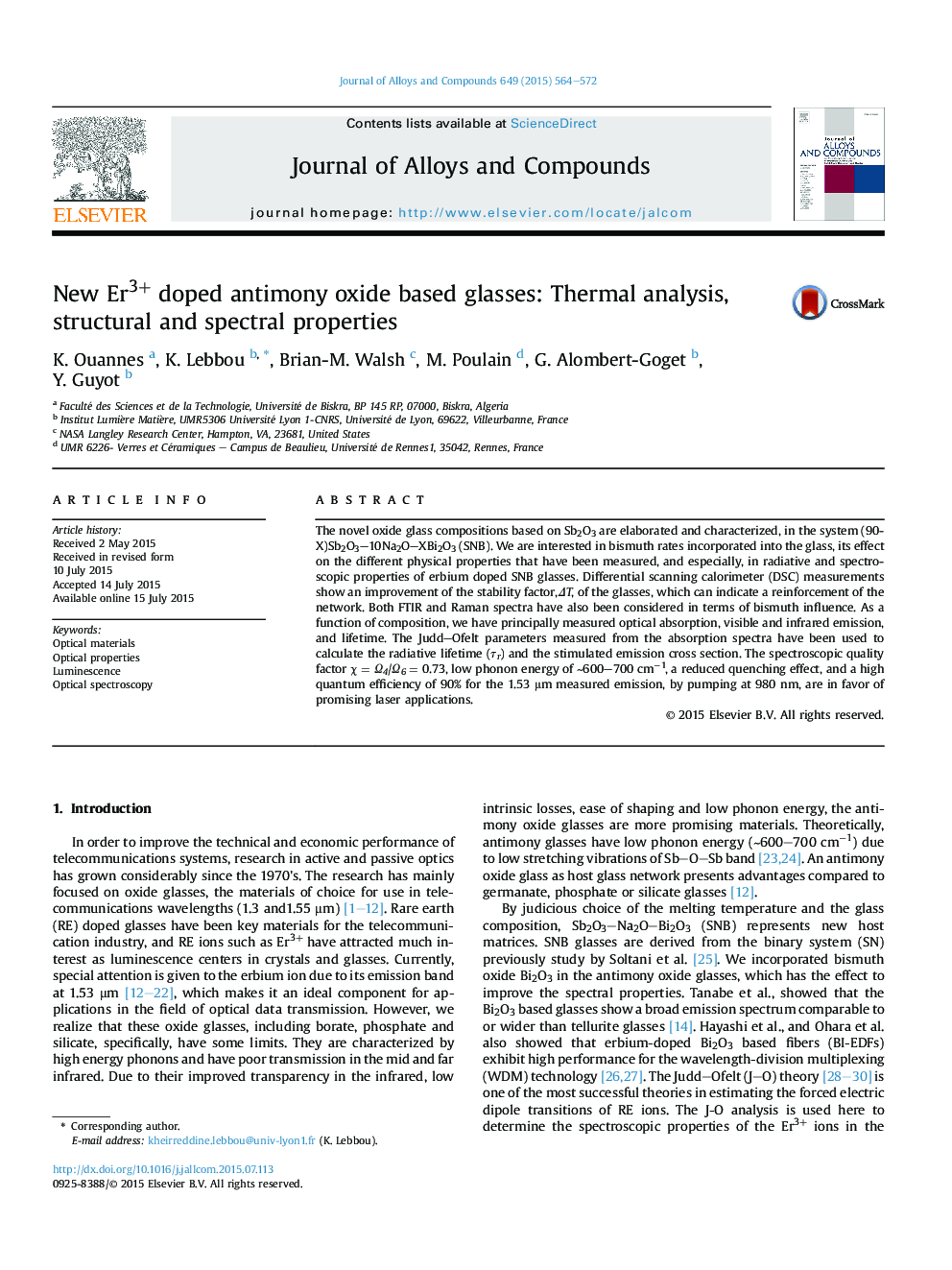| Article ID | Journal | Published Year | Pages | File Type |
|---|---|---|---|---|
| 1608630 | Journal of Alloys and Compounds | 2015 | 9 Pages |
•Glass belonging to Er-doped Sb2O3–Na2O–Bi2O3 (SNB) system are elaborated and characterized.•The intensity parameters Ωt were obtained via the Judd–Ofelt theory.•The optical properties were studied as a function of glass composition.
The novel oxide glass compositions based on Sb2O3 are elaborated and characterized, in the system (90-X)Sb2O3–10Na2O–XBi2O3 (SNB). We are interested in bismuth rates incorporated into the glass, its effect on the different physical properties that have been measured, and especially, in radiative and spectroscopic properties of erbium doped SNB glasses. Differential scanning calorimeter (DSC) measurements show an improvement of the stability factor,ΔT, of the glasses, which can indicate a reinforcement of the network. Both FTIR and Raman spectra have also been considered in terms of bismuth influence. As a function of composition, we have principally measured optical absorption, visible and infrared emission, and lifetime. The Judd–Ofelt parameters measured from the absorption spectra have been used to calculate the radiative lifetime (τr) and the stimulated emission cross section. The spectroscopic quality factor χ = Ω4/Ω6 = 0.73, low phonon energy of ∼600–700 cm−1, a reduced quenching effect, and a high quantum efficiency of 90% for the 1.53 μm measured emission, by pumping at 980 nm, are in favor of promising laser applications.
Graphical abstractFigure optionsDownload full-size imageDownload as PowerPoint slide
